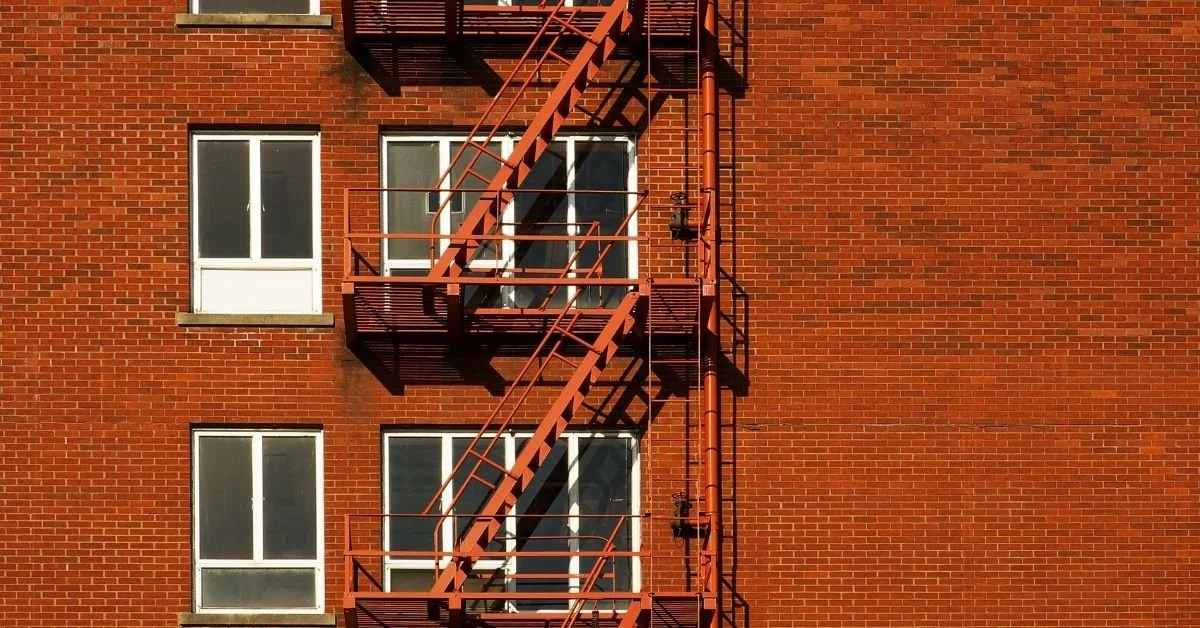The Importance of Silicone Connections on a Fire Escape
Fire escapes are critical components of building safety, as they provide reliable evacuation routes during emergencies. Within their intricate designs, they should have silicone applied to the connections that support stability, durability, and functionality.
These seemingly small elements are necessary to ensure fire escapes perform effectively, especially under high stress. Examine the importance of silicone connections on a fire escape, from their technical advantages to how they contribute to long-term safety and compliance.
Why Silicone Is Suited for Fire Escape Connections
Silicone stands out due to its unique material properties which make it particularly effective for fire escape applications. Fire escapes must endure environmental extremes, heavy loads, corrosion, and other stress factors that demand resilient materials. Silicone excels in these areas for several reasons.
Heat Resistance
Silicone can withstand high temperatures, typically between -75°F and 500°F, without degrading. During a fire, structural stability is crucial, and silicone connections can maintain their integrity even when exposed to intense heat. This properly offers an added layer of security and reliability in emergency situations.
Flexibility Under Stress
Silicone remains flexible under varying load conditions. This is essential for fire escapes that must support the dynamic motion of people evacuating quickly. Its ability to provide a secure yet adaptable connection prevents mechanical failures caused by sudden stress.
Durability Against Weathering
Outdoor fire escapes face constant exposure to rain, snow, UV rays, and fluctuating temperatures. Silicone’s resilience against these factors and other unpredictable environmental conditions reduces the risk of material fatigue, ensuring that connections do not become brittle or unreliable.
Corrosion Resistance
Unlike some metals or synthetic materials, silicone is highly resistant to corrosion caused by moisture, salty air, or industrial pollutants. This makes silicone a particularly good choice for buildings in coastal areas or highly polluted urban environments.
Structuring Stability Across Fire Escape Systems
A fire escape is only as strong as its weakest link, and that “link” is often where different materials connect. For this reason, you must not underestimate silicone’s role in establishing stable connections between components.
Joining Dissimilar Materials
Modern fire escapes often combine materials like steel, glass, and reinforced composites. Where these materials meet, physical and chemical incompatibility can lead to weak points. Silicone acts as a high-strength adhesive and sealant, bridging gaps and providing chemical stability.
Absorbing Vibrations and Movement
Fire escapes might seem static, but they endure vibrations caused by wind, foot traffic, and nearby vehicular activity. Silicone connections effectively absorb these vibrations. In doing so, they reduce the strain on adjoining components and decrease the chances of fractures or loosening over time.
Preventing Water Intrusion
Poorly sealed joints can allow water to seep into the structure, which can contribute to rust or mold buildup on your building’s structure. The excellent sealing capabilities of silicone highlight the importance of silicone connections on a fire escape. This material can protect the structure against water intrusion, bolstering the fire escape’s integrity.
Silicone’s Role in Fire Code Compliance
Building codes and fire safety regulations emphasize the importance of durable and effective fire escape systems. Silicone connections often contribute to meeting or exceeding these standards.
Load-Bearing Requirements
Many fire codes stipulate that fire escapes must support a specific weight without failure. Silicone’s strength, combined with its ability to retain properties under heat and pressure, helps systems comply with load-bearing regulations. Building inspectors often test these joints to ensure consistency, and silicone structures tend to perform robustly under scrutiny.
Maintainability
Regular maintenance is vital for fire escapes, and silicone offers ease of inspection and repair. Unlike metal connectors that may rust shut or deteriorate beyond repair, silicone joints retain their flexibility, making replacements or resealing relatively simple and cost-effective.
Fire Ratings and Certifications
Many silicone products come with fire-resistance certifications, which can help architects and engineers ensure the entire structure complies with safety requirements. This simplifies the approval process during inspections and provides added confidence in the system’s performance.
Regarding inspections for your structure, be sure to have them conducted by professionals. A thorough, accurate evaluation requires the expertise of welders who know the ins and outs of fire escape fabrication and repairs.
Look no further than Maximum Fire Escapes, where our team of licensed welders will examine fire escape components to ensure they’re in working order. If our comprehensive inspections reveal they’re not in good condition, we complete repairs that structurally reinforce your fire escape and maximize its safety and functionality. Maximum Fire Escapes’ work combines our design expertise with the latest tools and efficient techniques, resulting in installations that reflect our commitment to following the highest standards of safety and care.
Applications of Silicone in Fire Escapes
The value of silicone connections becomes evident when examining their specific functions in fire escapes. Here are some scenarios demonstrating frequent silicone placements and uses:
Sealing stairwell joints: Stairwells are high-traffic zones during evacuation. Here, silicone seals the joints between stair treads and risers, ensuring these connections remain intact and slip-free even in damp or high-heat conditions.
Fixing handrails securely: Handrails provide critical support but can loosen over time without proper connectors. Silicone adhesive bonds create a reliable seal, preventing the handrails from detaching during emergencies.
Waterproofing exterior ladders: For fire escapes with exterior ladders, silicone prevents rust and weakening at connection points, particularly in areas frequently exposed to rain or snow.
Common Misconceptions About Silicone Connections
Despite its advantages, misunderstandings about silicone persist, sometimes overshadowing its benefits. Addressing these misconceptions can provide clearer insights into its effectiveness. Consider the following.
Misconception: “Silicone Can’t Handle Stress Like Metal”
While it’s true that silicone is not a load-bearing material on its own, its primary role is to complement structural components by creating strong seals and connections. It enhances the durability and flexibility of load-bearing materials rather than replacing them.
Misconception: “Silicone Degrades Quickly Under Sunlight”
Innovations in silicone manufacturing largely mitigate concerns about UV degradation. Modern formulations include UV stabilizers, allowing silicone products to remain effective for decades even when exposed to direct sunlight.
Misconception: “Heat Will Cause Silicone To Melt or Fail”
Silicone’s engineering allows it to endure extreme temperatures far beyond what most materials can handle. Its heat resistance guarantees it remains functional in high-stress fire scenarios.
The Economic Case for Silicone Connections
Beyond safety, silicone connections offer financial advantages that make them a preferred choice for building owners and contractors. These benefits include reduced maintenance costs, longer component lifespans, and simplified installation.
Silicone resists cracking, peeling, and rusting, common culprits of recurring maintenance expenses. This means they’ll need fewer repairs and replacements over the life of the fire escape, saving you money. In addition, silicone extends the lifespan of connected components by protecting against environmental and physical stressors.
Silicone adhesives and sealants are easy to apply, cutting labor costs and installation time, which can be beneficial during retrofitting projects where you need to minimize downtime.
Sealing the Importance
Silicone connections may not be the most visible part of a fire escape, but their contribution to safety, durability, and functionality is undeniable. By providing additional heat resistance, flexibility, and durability, they form an integral component of reliable fire escape systems that meet modern safety standards.
Choosing silicone for these applications is not merely a practical decision but an investment in long-term safety and structural integrity. For building owners, engineers, and architects, understanding the role of silicone can lead to smarter design choices that prioritize compliance and safety.



